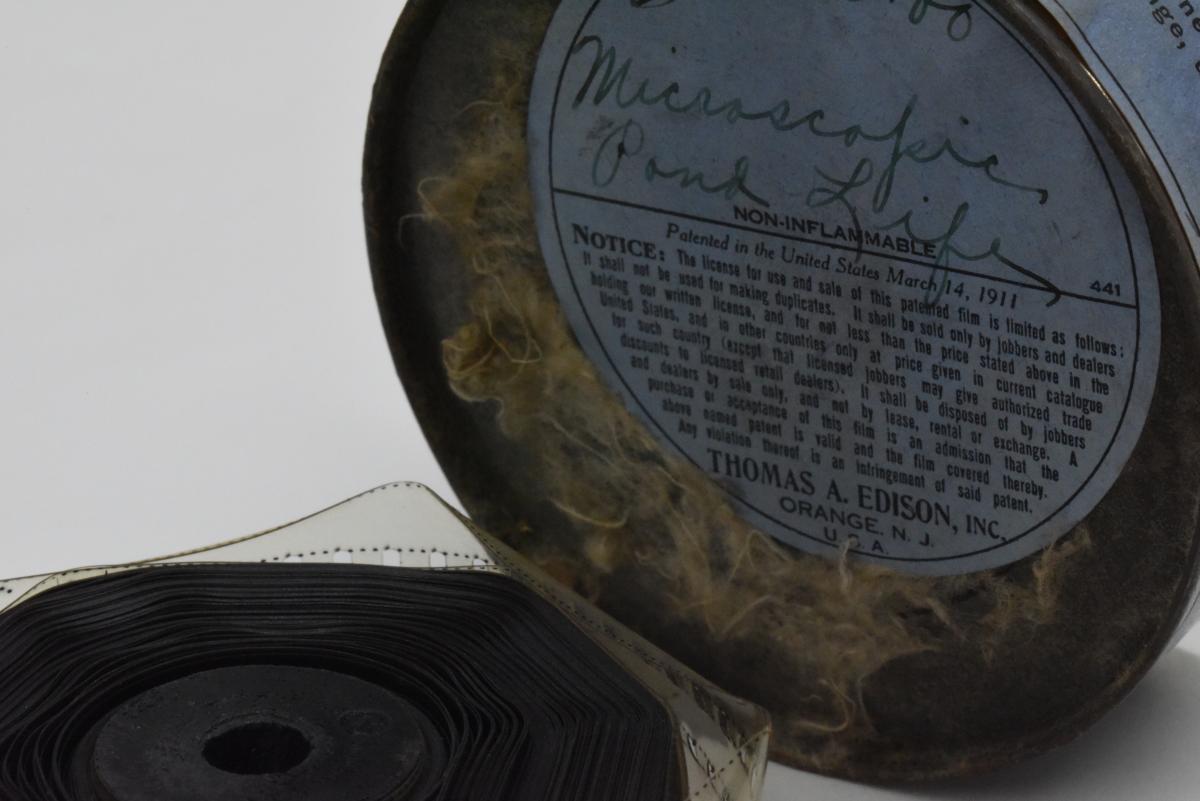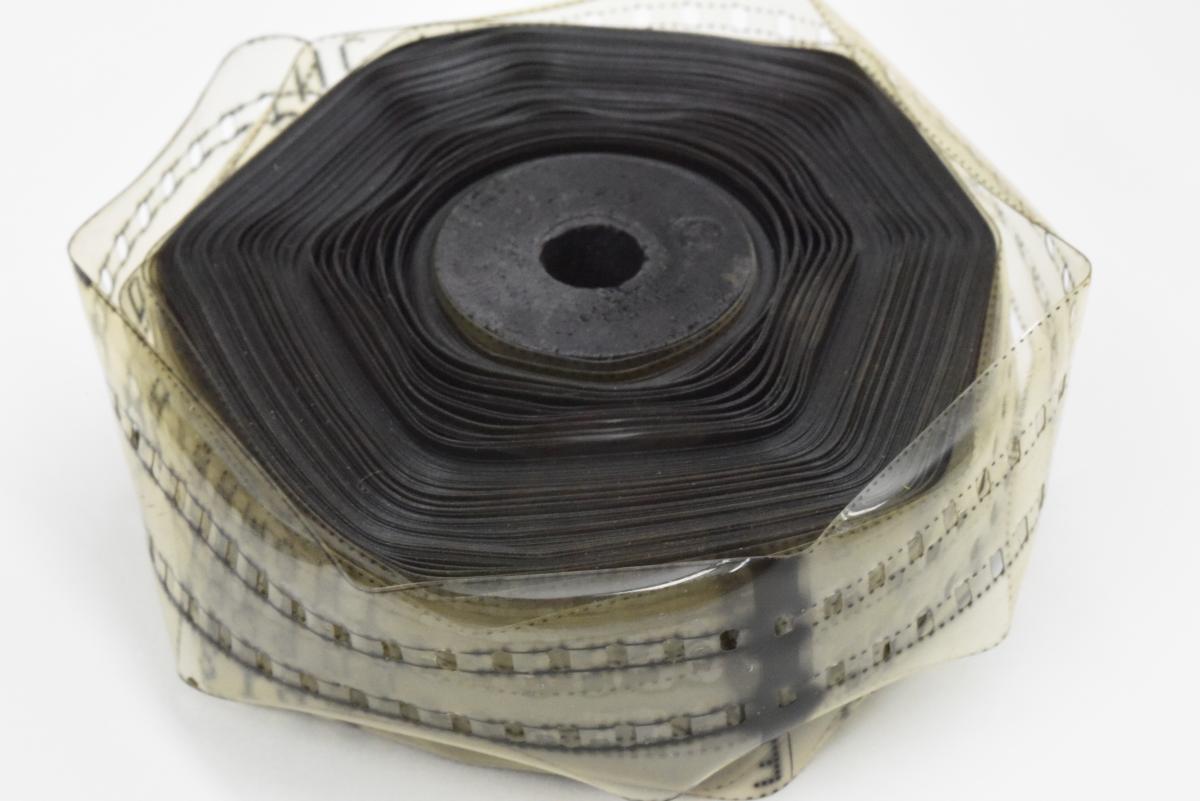Families of today enjoy Game of Thrones on their oversized flat screen with home theater seating, and multi-speaker surround-sound for an immersive experience. What system did a family of the 1910s with disposable income have for home entertainment? Twelve small film reels preserved at Hagley are evidence that Pierre Samuel duPont may have entertained the family using the Edison Home Kinetoscope, an early movie projector. The projectors were for schools, clubs, and the well-to-do. They came in several models costing $65-$90. The Home Kinetoscope was an invention of Thomas Edison’s labs, who strove in the early days of film to be the sole producer and distributor of movies and viewing equipment. The Home Kinetoscope movie system also foreshadowed Netflix’s movie on DVD rental system; the Kinetoscope reels could be “rented” or purchased with fees from $2.50 to $20 each. A ranked class system of “A” through “H” reflected the price of the different movie categories. When returned in exchange for a different title, subsequent rental prices were lower.
Hagley has one or two representative titles from each of the 8 classes ranging from the exotic; “East Indian Devil Dances” to the popular; “Treasure Island”. For the technical and scientific minded we have these educational titles; “Maple Sugar Industry” and “Microscopic Pond Life”. An account written by kinetoscope developer William Kennedy Dickson describes the experience of capturing microscopic creatures as “imprisoning of tricksy water-goblins on the sensitive film” that become monsters closing “upon each other in a blind and discriminate attack” when enlarged and projected on the screen.

The images on the 22mm film are small but big enough for a clear image when projected from 6 feet. Instead of one column of continuous images, there are three vertical columns, with 2 sets of guiding sprocket holes on either side of the central column. This reduced the overall physical length of a film and the amount of material used. The projector was hand-cranked, and the operator reversed its winding direction two times during play so the viewing was continuous.
These so-called “non-inflammable” films are made of cellulose diacetate plastic (not the flammable cellulose nitrate) wound on a wooden core. They have a really strange and powerful citrus odor. I haven’t been able to determine if the smell is related to the wood, or to some plasticizer used to keep the film flexible. For example, camphor oil was used as a plasticizer for cellulose nitrate photographic film. These have a distinctly different odor. Storage in low temperature and humidity conditions will reduce the rate of chemical reactions, and therefore the off-gassing of smelly substances. This improves the longevity of the film as well.

I don’t know why the duPonts never returned these films, but I suppose they could have run through all the available titles. Unlike Netflix, Home Kinetoscopes never did attain popularity and the list of known films is quite short. It is believed that fewer than 2,000 projectors were sold.
SOURCES
http://uschefnerarchive.com/project/edisons-home-kinetoscope/
http://www.reeldeals.com.au/kinetoscope/kinetoscope.htm
Ken Weissman and William O'Farrell, "Restoring 22mm Edison Home Kinetoscope Films" The Moving Image: The Journal of the Association of Moving Image Archivists Vol. 2, No. 2 (FALL 2002), pp. 137-141
W.K. Dickson and Anotinia Dickson. History of the Kinetograph, Kinetoscope, & Kinetophonograph (Museum of Modern Art)
Laura Wahl is the Library Conservator at Hagley Museum and Library.
